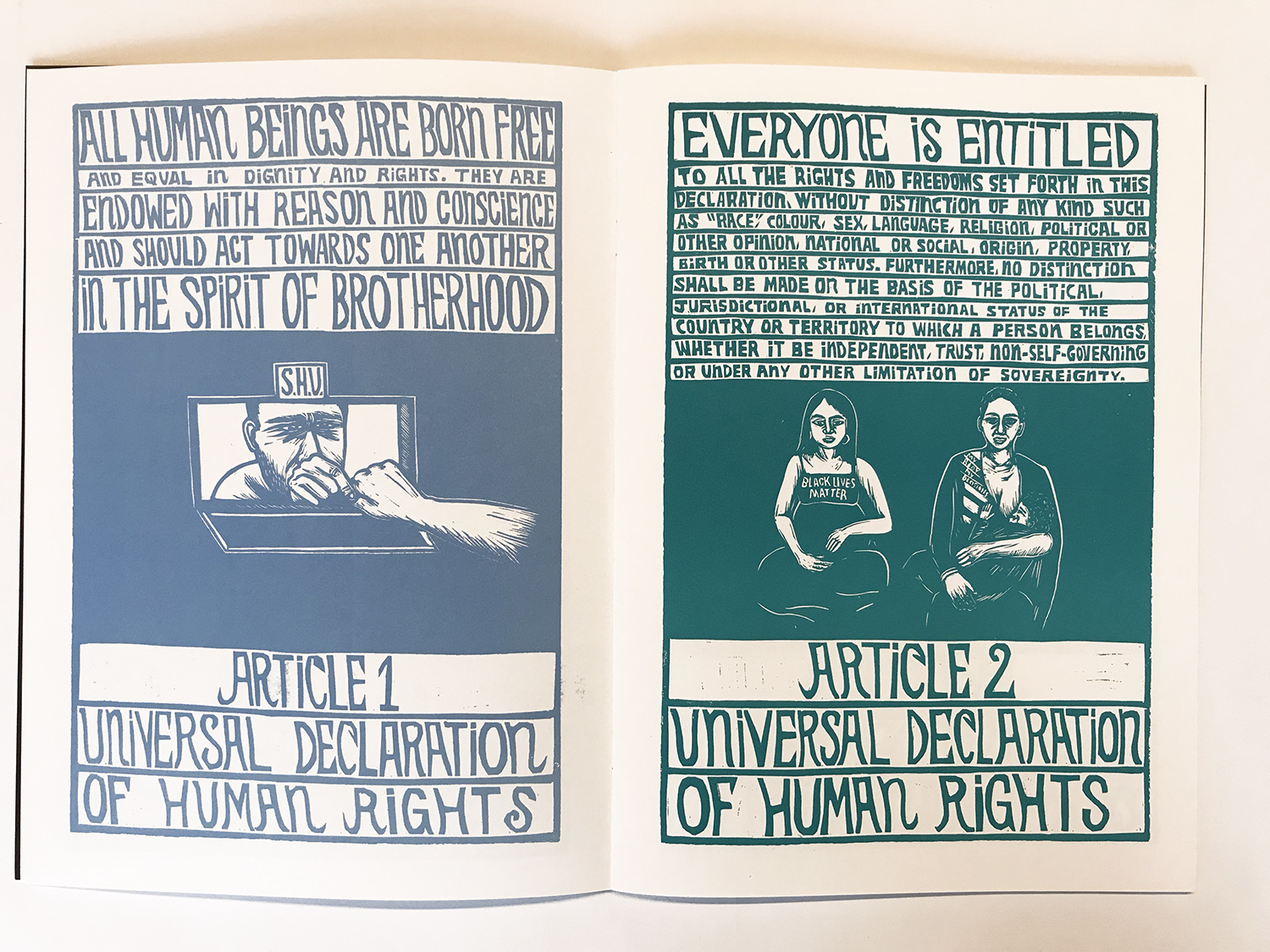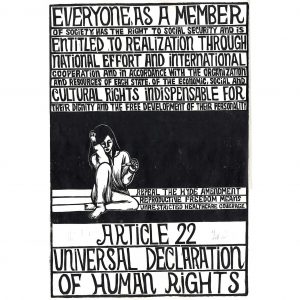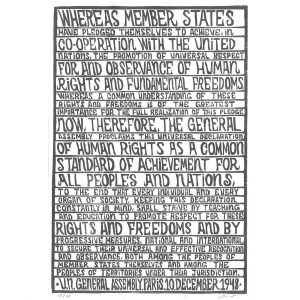Universal Declaration of Human Rights
Universal Declaration of Human Rights
Format
Zine
Dimensions
12 × 9 in
Pages
36
Location
Providence, RI
Printer
Black Cat Graphics
Collection
Collection Development, The Zine Shoppe, Zines, 🎁 ❄️❅ Holiday Shop ❅❄️ 🎁$ 20.00
15 in stock
View Collectors
Bard College
Baylor University
CCS Hessel Museum of Art
Colgate University
Deutsche Nationalbibliothek
Maryland Institute College of Art (MICA)
Massachusetts College of Art and Design (MASSART)
Ohio University, Alden Library
Private Collector
Slippery Rock University
Temple University
The British Library
University of California, Los Angeles (UCLA)
The declaration was adopted by the United Nations in 1948 to address many of the injustices that took place during World War II, including issues pertaining to civil rights, economic rights, political rights, sexual rights, environmental rights, social rights, and developmental rights. Each page represents a linoleum cut print illustrating each article.
“In March of 2016, Loretta Ross lectured at Brown University and spoke about fighting for reproductive justice through a human rights framework. She described 8 categories of human rights that have been developed and expanded upon since the creation of the Universal Declaration of Human Rights (UDHR), which was written in 1948 after World War 2. She described these categories as:
- Civil Rights – Non-Discrimination, Equality
- Political Rights – Voting, Speech, Assembly
- Economic Rights – Living Wage, Workers’ Rights
- Social Rights – Health Care, Food, Shelter, Education
- Cultural Rights – Religion, Language, Dress
- Environmental Rights – Clean Air, Water, and Land. No Toxic Neighborhoods
- Developmental Rights – Control Own Natural Resources
- Sexual Rights – Right to Have or Not Have Children, Right to Marry & When, Same-Sex Rights, Trans-gender Rights, Right to Birth Control and Abortion, Right to Sexual Pleasure and Define Families
Her lecture inspired me to investigate the UDHR and I found it to be an inspiring document. I was struck by this powerful global effort to create a collective agreement to define the necessary freedoms and rights of the human race. However, this document alone does not protect people from our governments’ abuses of power.
In the United States we are living under a president who, in his first few days in office, created legislation to actively violate the rights of our citizens and those seeking refuge in this country. However, human rights have been violated since colonization began in 1492 of what is now known as the United States. Our federal government continues to fail to acknowledge, apologize, or make reparations for the colonization, genocide, and slavery of indigenous communities of First Nation Tribes and people brought into slavery from African countries.
The United States actively supports and participates in human rights violations nationally and internationally, in areas that include our prison and policing system, war, genocide, environmental devastation, slavery, trade agreements, and our involvement in the IMF and World Bank.
This project is an artistic interpretation of the UDHR. This is a series of linocut prints highlighting the preamble and the 30 articles of the Universal Declaration of Human Rights. We are not taught this document in most educational settings. It is leaders like Loretta Ross who teach us to fight for freedom and justice through grassroots organizing to make institutions accountable to these values. It is our responsibility as humans to hold ourselves, our neighbors, and our leaders accountable to a global standard of human decency to ensure that human rights are upheld at all levels. The global fight for human rights is ongoing.”
— Meredith Stern, 2017
Made possible in part by a Rhode Island State Council on the Arts grant.











